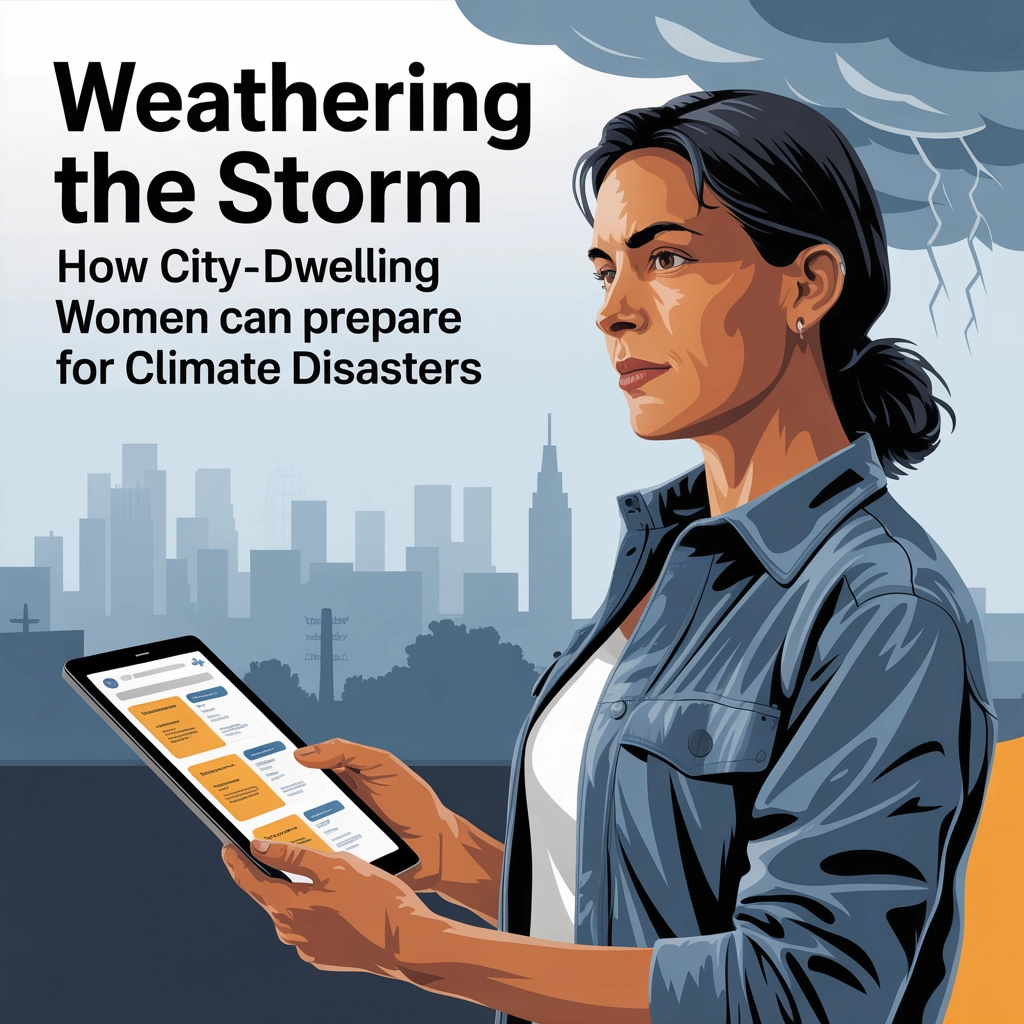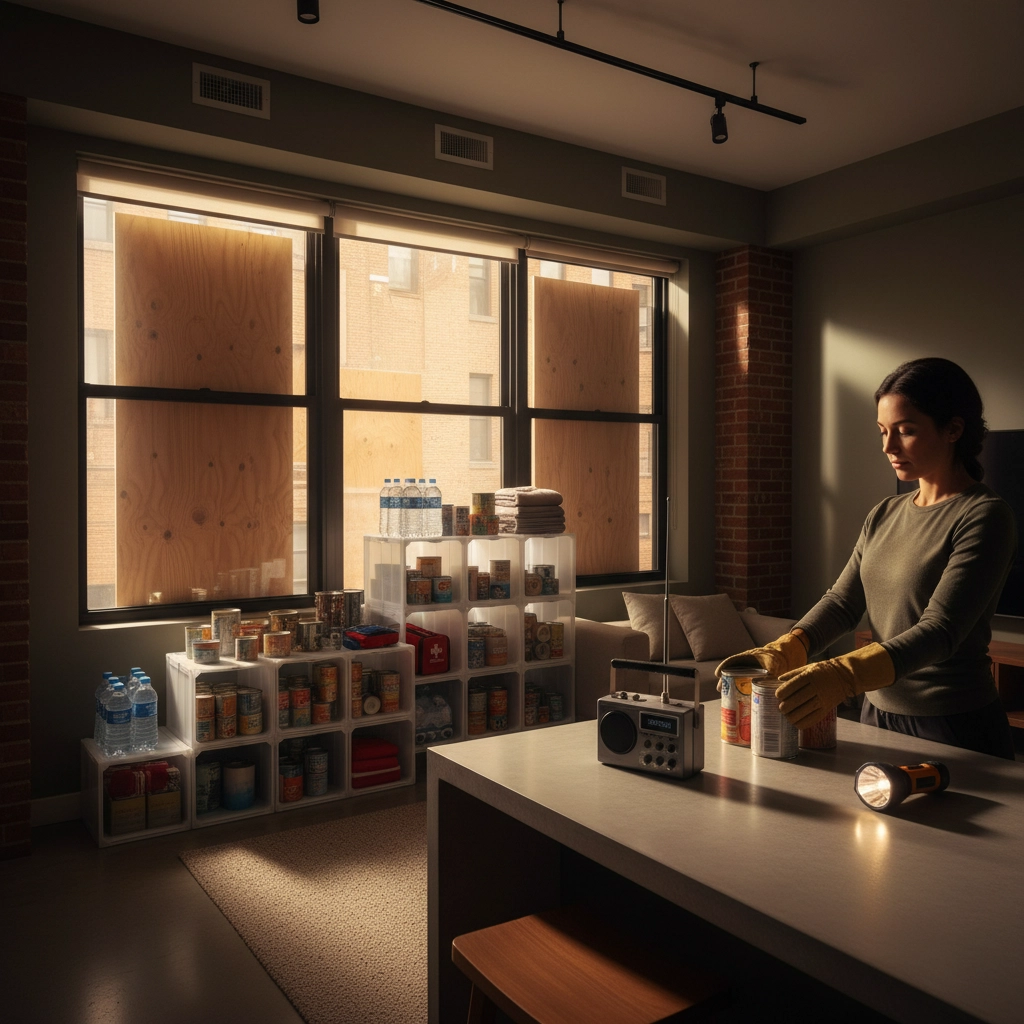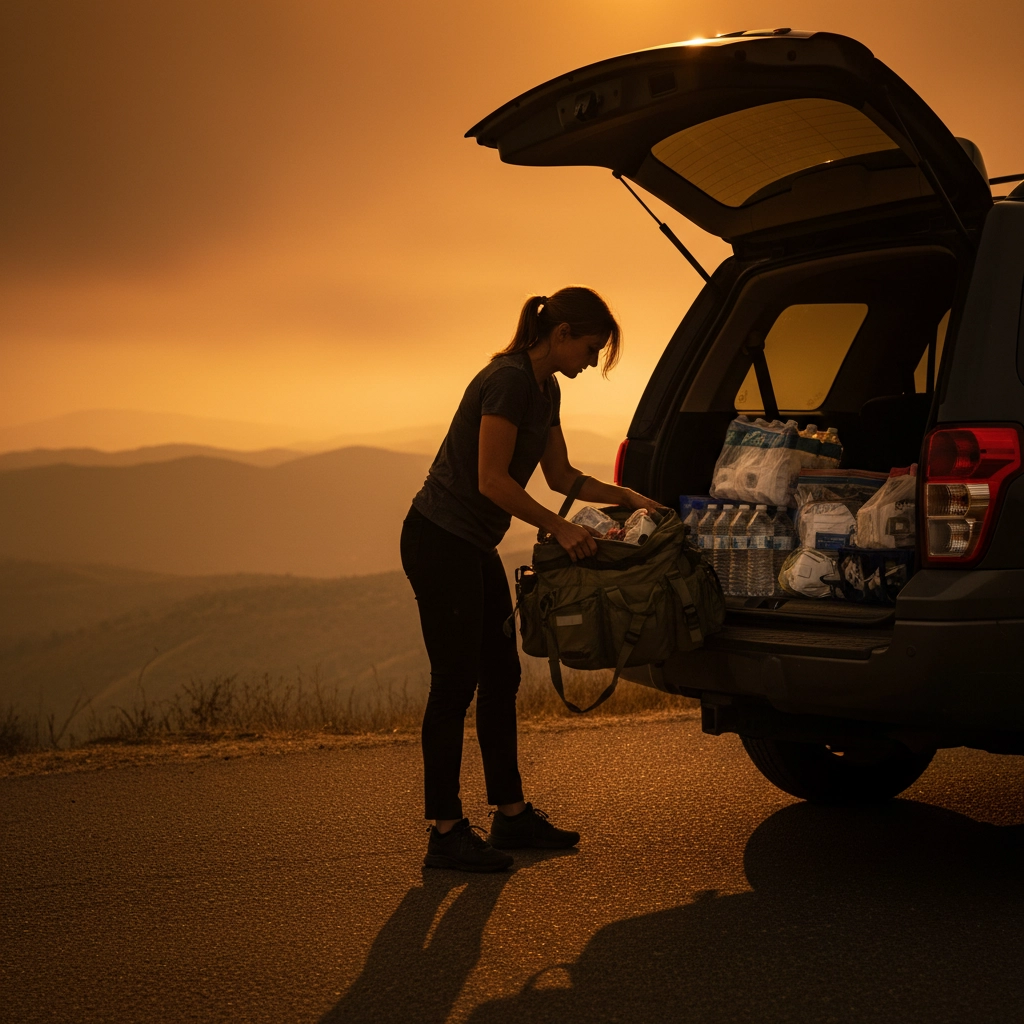
Living in the city as a single woman or mom comes with its own unique set of challenges, and climate disasters can feel particularly overwhelming when you’re managing everything on your own. But you don’t need a bunker in your backyard or a year’s worth of freeze-dried meals to be prepared, and you don’t have to feel helpless if you’re just getting started. Urban prepping is about smart, practical steps that fit into your real life, not some doomsday fantasy.
Climate disasters are becoming more frequent and intense, and cities aren’t immune. In fact, urban areas face specific challenges like power grid failures, overwhelmed emergency services, and limited evacuation routes. But don’t let that scare you – let it motivate you to take control of what you can. This is a quick primer for beginners, or if you have moved to an area where you’re unfamiliar with the area’s disasters.
Hurricane Preparedness: When the Coast Gets Rough
Before the Storm Hits
Start your hurricane prep by knowing your evacuation zone (seriously, look this up right now if you live in a coastal city). Many cities have online tools where you can enter your address and find out if you’re in a flood zone or evacuation area.
Create “go bags” (also known as a “bug out bag“) for each person in your household, which you can keep in your closet year-round. Include copies of important documents in waterproof bags (insurance papers, IDs, bank info), medications for at least a week, a small flashlight, cash in small bills, phone chargers, portable power bank(s), and a change of clothes. For moms, pack comfort items for kids – that favorite stuffed animal or toy can be a lifesaver during stressful times. If living with an elderly parent, make sure theirs has extra medication, an extra set of glasses, and any special toiletries they may need.
Stock up on water (one gallon per person per day for at least three days, or consider getting water in packets) and non-perishable food. City apartments don’t have tons of storage space, so go vertical, securing any shelving to the wall, and use “dead space” such as under-bed storage containers, on top of the fridge, or under the sink. These are great spots for emergency supplies.

During the Hurricane
If you’re staying put, move to the most interior room on the lowest floor, away from windows. Fill bathtubs with water or get a water bladder before the storm hits – you’ll need it if the water supply gets contaminated. Keep your phone charged and have a battery-powered or hand-crank radio for updates.
If you have kids, create a “hurricane fort” in your safe room. Make it feel like an adventure rather than something scary. Pack activities, snacks, and let them help with preparations so they feel involved rather than helpless.
Don’t venture out immediately – downed power lines, debris, and flooding create serious hazards. Take photos of any damage for insurance claims before cleaning up. Be wary of flood water – it can contain sewage, chemicals, and debris that can cause serious injuries or illness. So wear boots or at least study shoes that cover the entire foot.
Tornado Safety: When Things Get Twisted
Before Tornado Season
Sign up for local weather alerts on your phone – most cities have emergency notification systems. Know where your safe spaces are in every building you frequent regularly (work, home, kids’ schools). The lowest floor, interior room, away from windows is your goal.
Keep a pair of sturdy shoes and a flashlight in your safe room. Tornadoes can hit at night, and you might need to navigate debris in the dark. If you live in an apartment building, know where the stairwells are – elevators can fail during power outages.
During a Tornado Warning
If you did not have time to evacuate during the tornado watch and it’s now a warning, the tornado is just about on you. Get to your safe space immediately – don’t waste time opening windows or trying to outrun the storm in your car. Protect your head and neck with your arms or a thick blanket; put on a helmet if you have one! If you’re driving and can’t find shelter, get out of your car and lie flat in a low ditch, covering your head.
After a Tornado
Watch for hazards like gas leaks, electrical damage, and structural damage. Don’t use candles – gas leaks are common after tornadoes. Check on neighbors, especially elderly ones, but don’t move injured people unless they’re in immediate danger.
Wildfire Readiness: When Smoke Fills the Sky
Before Fire Season
Create a “go bag” that’s always ready – wildfires can move incredibly fast, and you might have minutes, not hours, to evacuate. Include N95 masks for everyone – smoke inhalation is a serious health risk even before the fire reaches you.
Register for your city’s emergency alerts and know multiple evacuation routes. Traffic can be a nightmare during evacuations, so having alternate routes mapped out can save precious time. While I always recommend trying to keep your car’s gas tank at least half full, definitely do this during fire season.

During a Wildfire
If you’re told to evacuate, go immediately. Don’t wait to see how close the fire gets. Fire is incredibly unpredictable, and delaying leaving may have you trapped. Close all windows and doors, turn off gas if you have time, but don’t delay leaving. Leave lights on so firefighters can see your house through smoke.
If you’re trapped, get inside, close all doors and windows, fill bathtubs and sinks with water, and wet towels to place around door cracks. Call 911 to report your location.
After a Wildfire
Don’t return home until authorities say it’s safe. Even if your home wasn’t burned, it might have smoke or structural damage. Wear masks when cleaning up ash – it can contain harmful chemicals and particles.
Earthquake Preparation: When the Ground Shakes
Before an Earthquake
If you live or have moved to an earthquake-prone area, secure heavy furniture and appliances to walls – a falling bookshelf can be deadly. Try to keep heavy items on lower shelves. Keep a flashlight and sturdy shoes by your bed. Keep emergency supplies in multiple locations (flashlight, small first aid kit, water, a whistle) – if one area of your home becomes inaccessible, you’ll have backup supplies.
You may have heard of the “triangle of life”, spots in each room where you could take cover, but this tactic has been discredited as it is nearly impossible to tell where in a room you would be safe. Instead, practice “Drop, Cover, and Hold On” with your kids. Make it a game rather than something scary.
During an Earthquake
Drop to your hands and knees, take cover under a sturdy desk or table, and hold on. If there’s no table, cover your head and neck with your arms. Don’t run outside – most injuries happen when people try to move during shaking.
In bed, stay there and cover your head with a pillow. Don’t get in doorways – that’s outdated advice that can actually be dangerous in modern buildings.

After an Earthquake
Check for injuries and hazards like gas leaks or electrical damage. Expect aftershocks and be ready to drop and cover again. If you smell gas, do not light a candle or anything that could cause a spark. Use stairs, never elevators, and be prepared for emergency services to be overwhelmed.
Urban-Specific Considerations
City living presents unique challenges during disasters. High-rise buildings, limited parking, crowded evacuation routes, and dependence on infrastructure all create specific risks. But cities also have advantages – more emergency services, hospitals, and community resources.
Build relationships with your neighbors now, before disaster strikes. In urban areas, your neighbors are your most immediate help. Exchange contact information and consider creating a building or block emergency plan.
Know where your utility shut-offs are located. In apartments, this might be in a basement or utility closet that requires building management access. Have those contact numbers saved in your phone.
Consider your pets – many emergency shelters don’t accept animals, so research pet-friendly options ahead of time. If you don’t have a car, know your public transportation evacuation options. Keep updated schedules and contact information in case you need to find out about any potentially dangerous changes to the weather. If you can, arrange with friends or family for emergency transportation. If you have enough warning and want to leave early, schedule a ride-share service (Uber, Lyft) ahead of time so you can leave and avoid the crowd rush.
Making It Work in Real Life
Emergency preparedness doesn’t have to cost a fortune or take over your life. Start small – buy a few extra canned goods each week, some extra water in your car, grab a couple of power banks, or watch for a power station to go on sale. The next time you’re at the dollar store, grab a couple of small flashlights that you can hang on the door hinges of your bedrooms. Build your emergency kit gradually rather than trying to do everything at once.
The best hack that costs you nothing: consistently keeping your phone, keys, glasses, and purse/wallet in the same place! If you do this, you’ll never waste time having to look for them when you’re in a hurry, and you can find them in the dark should you lose power.
For busy moms, involve your kids in age-appropriate ways. They can help pack go-bags, learn safety procedures, and yes, kids as young as nine can learn First Aid. They can understand that being prepared is smart, not scary. Teaching them these skills now builds their confidence and resilience for life.
Remember, you’re not preparing for the end of the world – you’re preparing to keep your family safe and comfortable during temporary disruptions. Most disasters are exactly that – temporary situations that you can absolutely handle with some basic preparation.
The goal isn’t to have enough supplies to survive in isolation for months. It’s to have enough resources to bridge the gap until normal services resume and to be comfortable while emergency responders handle the big picture.
You’ve got this! Taking control of your disaster preparedness is empowering, and you’re already stronger and more capable than you think. Start with one small step today, and build from there.
Ready to dive deeper into emergency preparedness? Check out my comprehensive prepper checklist (the password is StayReady) for more detailed guidance, and don’t miss my podcast where I discuss real-world prepping strategies that actually work for busy urban women.


